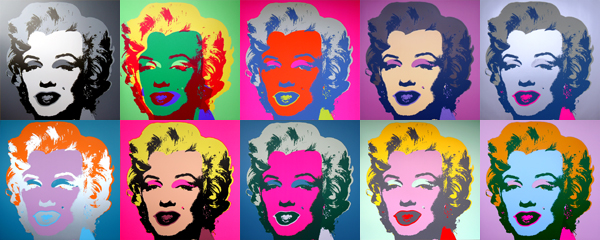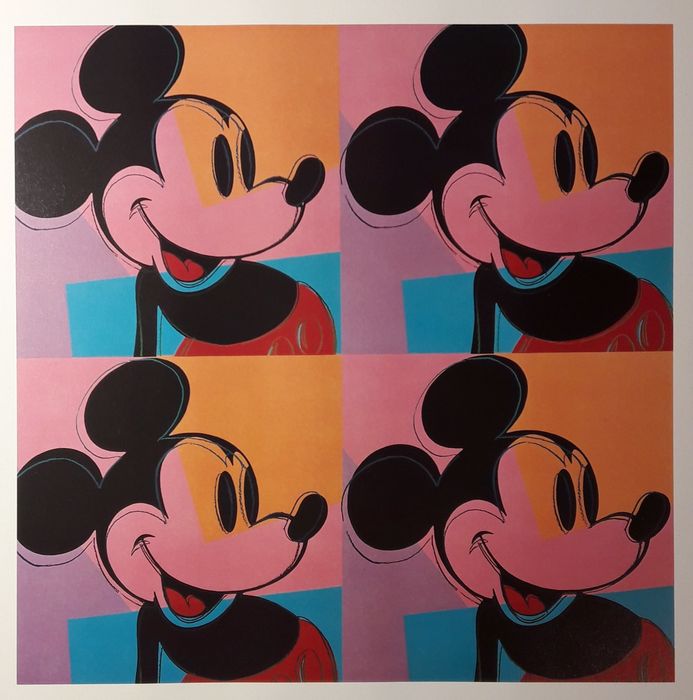Dear reader! I hope you are here because you have been in search of ideas for a lesson on Art and English for primary school children. If so, you are in the right place! I would like to share with you a lesson that I taught a few months ago as a part of my Art Explorers programme. I would like to start with some blowing my own trumpet in an attempt to inspire you and to think ‘I want one of those!‘
It was a great lesson because…
- our group of Art Explorers was a mixed-age, a mixed-level and a mixed-ability group, with some pre-A, some A1 and some A2 children and we were all united in art. Everyone was involved, everyone was producing as much as they could and everyone had fun.
- the kids who took part were the members of five different groups at the school and it was the first time they had a chance to interact with each other, in English.
- the children had a chance to revise and practise English, to find out about Andy Warhol, to talk about feelings, emotions and associations and to exercise their creativity in the craft task.
- it worked very well as an introduction to our Art Explorers programme
- it was relatively low-key as regards the preparation and craft materials as we used the simplest things available: a powerpoint, a handout, a few sets of vocabulary flashcards, a few sets of watercolours, paintbrushes and cups.
- it lasted 60 minutes but it could easily be adapted to 45 or 90 minutes, depending on the needs of the group and the age of the students.
The lesson, stage by stage
Stage 1: Introduction
We said hello, introduced ourselves and we had a small ‘get to know each other’. Each pair of students got a pile of flashcards (food, toys, sports, colours, animals etc). The students were supposed to pick out one card and to ask each: Do you like…. There was a model question and answers on the board, together with ‘because’ which the older students were already familiar with in order to encourage more developed answers.
Stage 2: Colours and emotions
We revised the emotions and a set of the basic adjectives was displayed on the board as a point of reference. Afterwards, we revised the colours and I introduced the idea of associations. The key word here (‘associations’) is actually quite similar to its counterpart in the kids’ L1 but I decided to use even a simpler structure ‘Green is a happy colour because…’
The kids were put into pairs, for another speaking activity and they were comparing their own associations related to each of the colours. At this point we did not use the flashcards. Instead, eaach pair got a set of markers and they were asked to discuss all the colours in the set. Afterwards we compared our ideas.
Stage 3: The artist of the day
We moved to the TV room to meet the artist of the day. At this point I was using the powerpoint which you can find in the attachments.
First of all we looked at the photo of Andy and the kids said as much as they could, about his appearance and character. Only later did I introduce him properly, albeit briefly – as artist, from the US, a very creative person.
I showed the kids a few paintings and asked what they thought of them. They were using the simplest structures of ‘I like’ and ‘I don’t like’ and, in the case of the older and more advanced students, to provide a rationale for their views.
The Campbell soup was especially interesting. First of all, because we compared it to the local brand of ready made food that the kids could relate to and it was a huge surprise that such a usual item can become an artifact. Second of all, this particular painting was how we transitioned into the theme of the day: how the same item, represented in different colours can create different associations.
Stage: The colours and the emotions
We looked at the photograph of Marilyn Monroe and one of the most famous paintings by Andy Warhol and at the similar painting of Mickey Mouse. We worked as a group and we talked about the different emotions related to different versions of Marilyn and Mickey Mouse and how they made us feel. I wanted to keep it open class in order to give the students a chance to hear as many different versions and ideas as possible to show them that the same painting can generate a great variety of emotions.
Stage: Let’s create
I told the kids that we are going to try to express our emotions and that we are going to be like Andy Warhol. I added that to Andy, Marilyn and Mickey were important symbols because he was American and that we would use some other symbols. At this point, the kids were already shouting out the name ‘Chebourashka’:-)
We went back to the other classroom. Everyone got a handout (see below) and a pencil or a marker. First, we all decided what feelings and emotions we wanted to represent and we labelled all the sections of the handout.
Afterwards, I gave out the painting materials and we sat down to work. The kids were given time to paint and I was painting my own and monitoring and chatting to the kids and asking the follow-up questions.
Stage: Tell me about your Chebourashka
The kids worked in pairs and told their partner about their pictures and the emotions they represented and, whenver possible, provided rationale for that. In that particular lesson, we only had enough time to talk to one partner but, in theory, there is a lot more potential and it is more than recommended for the kids to swap pairs and to talk to as many peers as possible.
Stage: Goodbye
We finished the lesson with cleaning up, with a round of stickers and with a song.

Materials
- The powerpoint
- The Chebourashka handout
- The Mickey Mouse handout
- Optional: Story reading – The Colour Monster by Anna Llenas and some more ideas here

